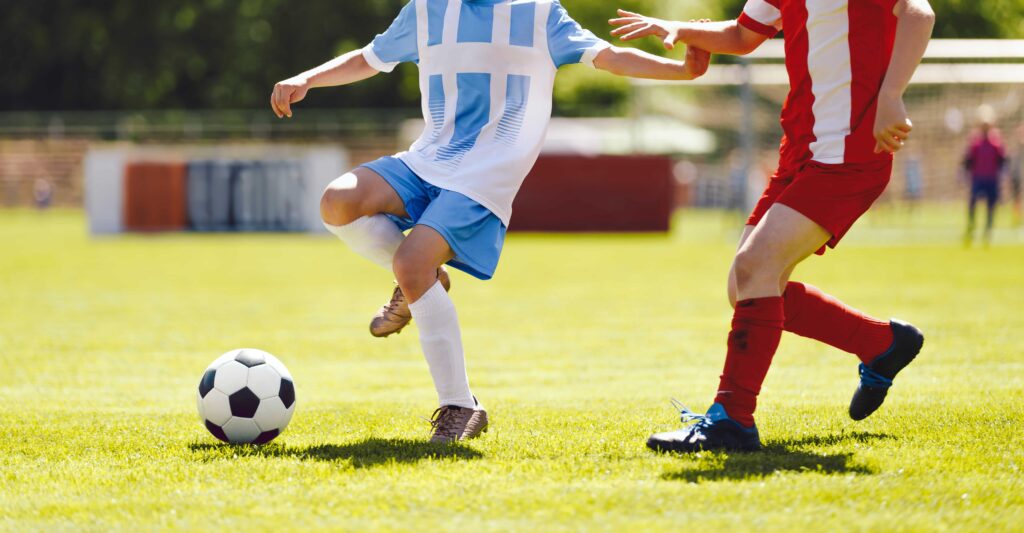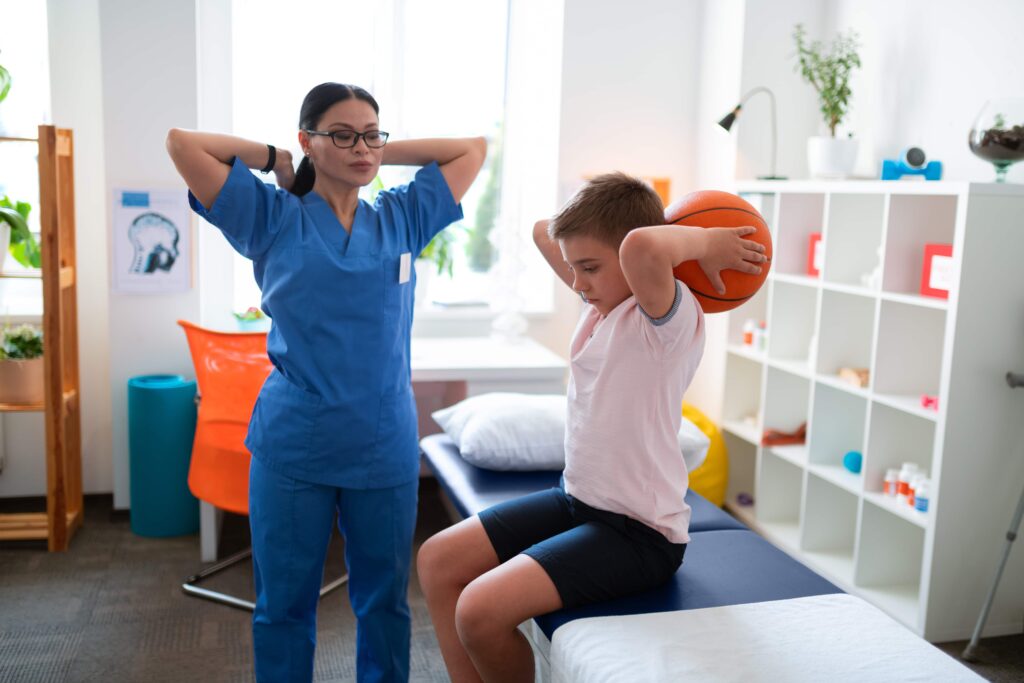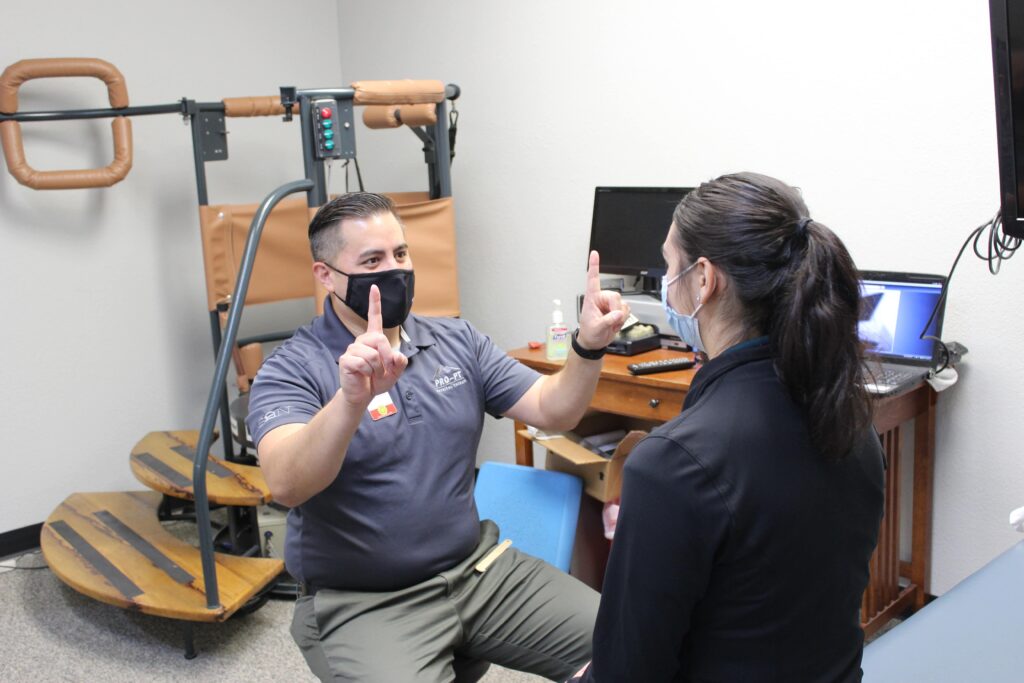When we think about concussions, the discussions often are around professional and collegiate athletes who are injured during sporting events. However, younger children and toddlers can also experience concussions. While concussion prevalence is definitely highest in organized sports—around 50%—these injuries may easily occur during PE activities at school or during incidents around the home. While entities in organized sports such as soccer, football, lacrosse, and rugby are always on the lookout for head and neck injuries, concussion symptoms in kids in other situations may go unidentified and untreated because less attention is paid to signs of concussions.
With younger kids and toddlers learning their bodies and how to jump and climb, there will likely be falls and good bonks on the noggin! While a few tears and a hug from mom or dad can usually do the trick, these accidents should never be quickly brushed off. Concussions have been a significant point of interest in the last several years, especially in sports, but when a concussion goes unnoticed, it can lead to long-term issues for an individual, especially if suffered at a young age.

Diagnosing Concussions in Kids + Adolescents
Symptoms can range from physical, to emotional, to cognitive. Concussion symptoms can include:
- Greater fatigue
- Tiredness
- Headaches
- Light sensitivity
- Vision issues
- Poor attention
- Poor concentration
- Memory issues
- Trouble thinking clearly
Being aware of a child’s normal cognition level, mood, and response to questions or other stimuli can be helpful when tracking symptoms, especially because some kids aren’t able to vocalize exactly what they are feeling. If a child seems to be more anxious or irritable than normal or experiencing heightened emotional responses, there can be a concern for injury.
1. Seek Medical Care
If a known impact or possible head injury has occurred, and a child is acting differently from their norm, a physician needs to be brought in to assess. The physician will diagnose a concussion based on the child’s history, along with any physical signs and how they respond to certain stimuli.
2. Inform Supervising Adults + Track Progression
Parents and other caregivers can also help to track the progression of the concussion. When an injury may have occurred and a concussion is diagnosed or suspected, it is important to inform school staff along with coaches and trainers—this applies even if the injury occurred away from school.
While these individuals are not always trained in monitoring concussion symptoms, they are familiar with the child and can help with the recovery process.
3. Diminish Activity Level
Once a concussion has been diagnosed, activity level should be diminished for a period of time, especially for the first few days.
Activities that can lead to greater brain activity, such as video games, activities with lots of screen time where the brain processes information quickly, and loud and stressful environments should be limited. Physical activity should also be limited to allow healing to occur without much physical jostling to the head.
As symptoms lessen or become stabilized, a return to school and light physical activity can occur. There should still be regular monitoring of any symptom changes. Once symptoms are nearly gone, which can take days, weeks, or months, the child’s physician can ultimately clear them for return to regular sports activities and normal play.
4. Return to Normal Activities After Recovery
While kids can be very resilient, brain injuries cannot be taken lightly. Once a concussion has occurred, it can put them at greater risk for a future concussion, especially if the initial injury wasn’t allowed to fully resolve.
Future risks should always be carefully considered, especially if a child regularly plays sports. Regardless of talent, a child’s health and safety should always come first.

Role of Physical Therapy in Concussion Care
Methods of Physical Therapy for Concussion Recovery
When caring for a child who suffered a concussion, a physical therapist typically assists with a gradual return to physical activity through guided exercise and, at times, visual and concentration activities. At PRO~PT, a number of our physical therapists are trained and certified in the use of ImPACT testing, which has been FDA-approved to monitor changes over time in people who have suffered concussions. There is also specialized ImPACT testing for pediatrics.
Pediatric Post-Injury Assessment for Children
While the normal ImPACT program is administered as a series of questions on a laptop or desktop computer, the pediatric post-injury assessment uses game-like questions and tasks given on a tablet that are appropriate for ages 5 to 11. Testing is readministered as time passes, and changes in scoring can aid the practitioner in determining how the child is recovering.
Baseline Testing for High School Athletes
Often in high school athletic programs, athletes can be given baseline ImPACT testing at the beginning of their season. This way, if an injury occurs or there is a concern of concussion, a retest can be compared to their baseline findings.
This comparison can be used to help detect and treat a concussion. But ultimately, communication through the physical therapist and a child’s parents, coaches, and medical team serves as the best way to ensure that an injured student’s physical abilities are healing in conjunction with their cognitive ability.

Importance of Proper Concussion Care for Kids and Adolescents
When it comes to children, never take a bump on the head from a fall off the couch or a hard landing while playing outside for granted. While a child’s body is like a great, strong piece of equipment designed to take some hits and keep on going, we should always be watching for concussion symptoms. With proper monitoring, we can ensure that our kids are able to play, perform, and participate in their environment while limiting long-lasting physical and cognitive issues from concussions.







